Mitochondrial aldehyde dehydrogenase-2 activation prevents β-amyloid-induced endothelial cell dysfunction and restores angiogenesis
- PMID: 23447675
- PMCID: PMC3666252
- DOI: 10.1242/jcs.117184
Mitochondrial aldehyde dehydrogenase-2 activation prevents β-amyloid-induced endothelial cell dysfunction and restores angiogenesis
Abstract
Amyloid β peptides (Aβ1-40 and Aβ1-42) cause cerebral degeneration by impairing the activity of angiogenic factors and inducing apoptosis and senescence in the endothelium. Amyloid peptides are known to induce oxidative stress. Impairment of mitochondrial aldehyde dehydrogenase 2 (ALDH2) following oxidative stress, results in accumulation of toxic aldehydes, particularly 4-hydroxynoneal (4-HNE). We sought to determine the role of mitochondrial ALDH2 in Aβ-related impairment of angiogenesis. We hypothesized that by increasing the detoxification activity of ALDH2 we would reduce Aβ-driven endothelial injuries and restore angiogenesis. We used a selective ALDH2 activator, Alda-1, assessing its ability to repair mitochondrial dysfunction in the endothelium. Treatment of human endothelial cells with Aβ1-40 (5-50 µM) induced loss of mitochondrial membrane potential, increased cytochrome c release and ROS accumulation. These events were associated with 4-HNE accumulation and decrease in ALDH2 activity (40%), and resulted in disassembly of endothelial junctions, as evidenced by β-catenin phosphorylation, disorganization of adherens and tight junctions, and by disruption of pseudocapillary formation. Alda-1 (10-40 µM) abolished Aβ-induced 4-HNE accumulation, apoptosis and vascular leakiness, fully restoring the pro-angiogenic endothelial phenotype and responses to FGF-2. Our data document that mitochondrial ALDH2 in the endothelium is a target for the vascular effect of Aβ, including loss of barrier function and angiogenesis. ALDH2 activation, by restoring mitochondrial functions in the endothelium, prevents Aβ-induced dysfunction and anti-angiogenic effects. Thus, agents activating ALDH2 may reduce endothelial injuries including those occurring in cerebral amyloid angiopathy, preserving the angiogenic potential of the endothelium.
Keywords: Aldehyde dehydrogenase 2; Amyloid β; Angiogenesis; Mitochondria.
Figures

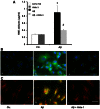
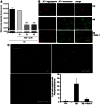
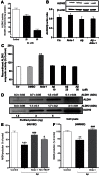
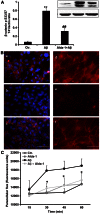

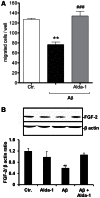
Similar articles
-
Pharmacological Activation Of Aldehyde Dehydrogenase 2 Protects Against Heatstroke-Induced Acute Lung Injury by Modulating Oxidative Stress and Endothelial Dysfunction.Front Immunol. 2021 Oct 26;12:740562. doi: 10.3389/fimmu.2021.740562. eCollection 2021. Front Immunol. 2021. PMID: 34764958 Free PMC article.
-
Alda-1, an ALDH2 activator, protects against hepatic ischemia/reperfusion injury in rats via inhibition of oxidative stress.Free Radic Res. 2018 Jun;52(6):629-638. doi: 10.1080/10715762.2018.1459042. Epub 2018 Apr 13. Free Radic Res. 2018. PMID: 29589772
-
Mitochondrial aldehyde dehydrogenase activation by Alda-1 inhibits atherosclerosis and attenuates hepatic steatosis in apolipoprotein E-knockout mice.J Am Heart Assoc. 2014 Nov 12;3(6):e001329. doi: 10.1161/JAHA.114.001329. J Am Heart Assoc. 2014. PMID: 25392542 Free PMC article.
-
Role of aldehyde dehydrogenase 2 in ischemia reperfusion injury: An update.World J Gastroenterol. 2018 Jul 21;24(27):2984-2994. doi: 10.3748/wjg.v24.i27.2984. World J Gastroenterol. 2018. PMID: 30038465 Free PMC article. Review.
-
Dysfunction of mitochondria and oxidative stress in the pathogenesis of Alzheimer's disease: on defects in the cytochrome c oxidase complex and aldehyde detoxification.J Alzheimers Dis. 2006 Jul;9(2):155-66. doi: 10.3233/jad-2006-9208. J Alzheimers Dis. 2006. PMID: 16873963 Review.
Cited by
-
Reduced Lipid Peroxidation Predicts Unfavorable Prognosis in Hepatocellular Carcinoma, but Not Intrahepatic Cholangiocarcinoma.Biomedicines. 2023 Sep 6;11(9):2471. doi: 10.3390/biomedicines11092471. Biomedicines. 2023. PMID: 37760911 Free PMC article.
-
The Role of Mitochondrial Aldehyde Dehydrogenase 2 (ALDH2) in Neuropathology and Neurodegeneration.Acta Neurol Taiwan. 2016 Dec 15;25(4)(4):111-123. Acta Neurol Taiwan. 2016. PMID: 28382610 Free PMC article. Review.
-
Endothelial Mitochondrial Dysfunction in Cerebral Amyloid Angiopathy and Alzheimer's Disease.J Alzheimers Dis. 2019;72(4):1019-1039. doi: 10.3233/JAD-190357. J Alzheimers Dis. 2019. PMID: 31306129 Free PMC article. Review.
-
Targeting endothelial cell metabolism for cardio-protection from the toxicity of antitumor agents.Cardiooncology. 2016 Mar 15;2(1):3. doi: 10.1186/s40959-016-0010-6. Cardiooncology. 2016. PMID: 33530139 Free PMC article. Review.
-
[ALDH2 attenuates LPS-induced increase of brain microvascular endothelial cell permeability by promoting fusion and inhibiting fission of the mitochondria].Nan Fang Yi Ke Da Xue Xue Bao. 2022 Dec 20;42(12):1882-1888. doi: 10.12122/j.issn.1673-4254.2022.12.18. Nan Fang Yi Ke Da Xue Xue Bao. 2022. PMID: 36651258 Free PMC article. Chinese.
References
-
- Aliev G., Seyidova D., Lamb B. T., Obrenovich M. E., Siedlak S. L., Vinters H. V., Friedland R. P., LaManna J. C., Smith M. A., Perry G. (2003). Mitochondria and vascular lesions as a central target for the development of Alzheimer's disease and Alzheimer disease-like pathology in transgenic mice. Neurol. Res. 25, 665–674 10.1179/016164103101201977 - DOI - PubMed
Publication types
MeSH terms
Substances
Grants and funding
LinkOut - more resources
Full Text Sources
Other Literature Sources
Miscellaneous

